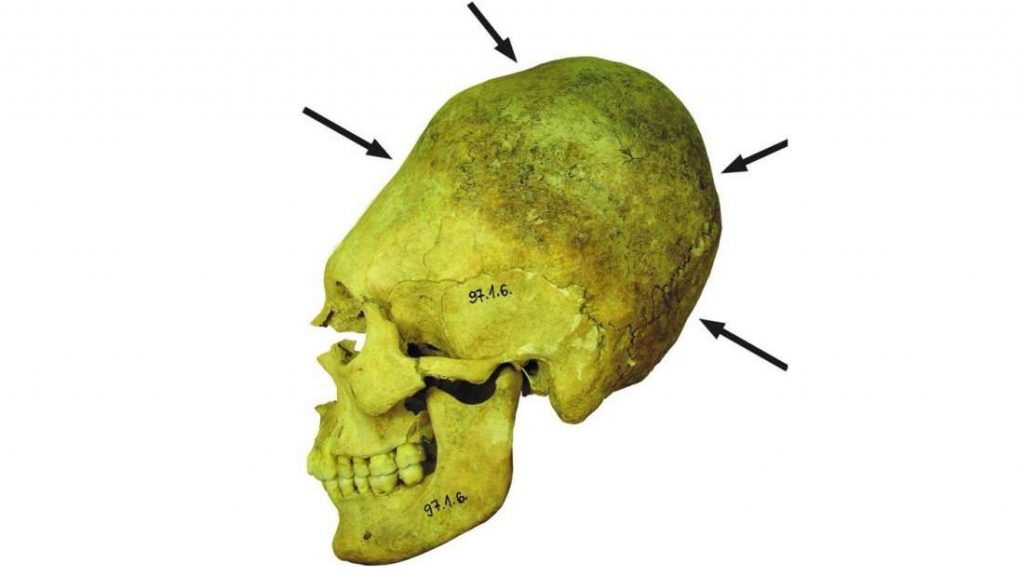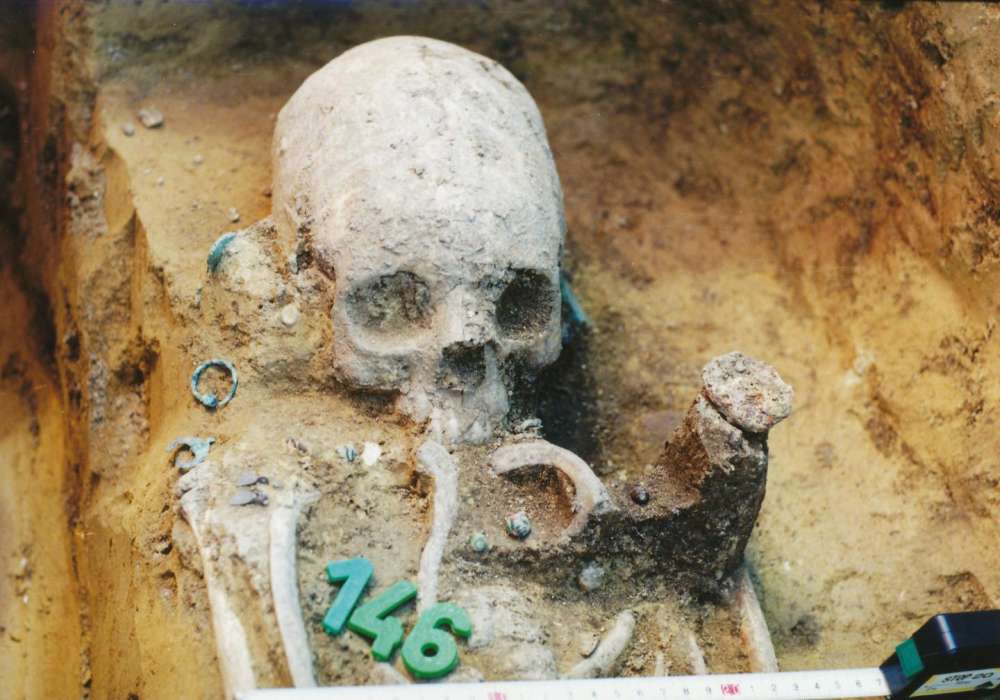Archeologists have just unearthed dozens of skeletons with deformed elongated skulls in an ancient Hungarian cemetery.
This new find shows how people lived during the trouble and turmoil sparked by the Fall of Rome.

The ancient graveyard is known as the cemetery of Mözs-Icsei-dűlő and dates back to the fifth-century CE.
The site in Hungary was first excavated in the 1960s, followed by later digs throughout the 1990s, which revealed the skeletal remains of at least 96 people.
Alien skulls and 3 distinct groups
New archeological research shows that at least 51 of the burials were found to have artificially elongated skulls that appear to have been shaped by bandage wrappings, making the cemetery home to the largest concentration of this strange phenomenon in Central Europe.

As well as the deformed skulls, the cemetery also contained three distinct groups buried separately across two or three generations, reflecting the colossal cultural changes that were occurring at the time.
Group 1: The Locals
The earliest of the distinct burial groups at Mözs-Icsei-dűlő contains a small number of local people buried in graves built in a brick-lined Roman style.
Group 2: The Outsiders
The next group, buried a few decades after the earliest group, were “outsiders”: twelve individuals whose bones show they all shared a similar diet, but they did not originally come from the region. They also appear to have introduced new traditions to the area, such as burying goods in the graves and skull deformation.
Group 3: Old Romanized Culture
The third group of later burials featured people who appear to have blended the old Romanized culture with various foreign traditions, including the skull deformation.
A bit of History
By the fifth century CE, the Western Roman Empire was crumbling to pieces after suffering from centuries of escalating conflicts with their barbarian neighbors, not to mention the long list of assassinations, rebellions, and plagues that wracked the empire.
One of Rome’s losses during this period was Pannonia, a province bounded by the River Danube in present-day western Hungary that was given up to the nomadic warriors, the Huns, around 433 CE.
The resulting chaos and change in this area resulted in numerous different groups of people flooding into Pannonia, seeking refuge from the Huns, and mixing with the established Romanized population.
Why skull binding?
In this particular instance, it remains unclear where the tradition of skull binding was brought from, although it appears to have originated somewhere outside of the Roman Empire’s influence.
Archaeologists have found elongated skulls from regions across Central and Eastern Europe, including modern-day Austria, Croatia, Hungary, Romania, Serbia, Slovakia, and Slovenia.
Further afield, the practice has also been documented in the Americas, Asia, and Africa.
Its meaning is likely to have differed from culture to culture, although researchers generally believe it was used to express some kind of social status. More archeology news on Strange Sounds or Steve Quayle.













Oh, great, here is one from the 1960’s….. Only 60 years of sitting on this egg of truth.
Hmmmm, imagine how weird they looked when alive.
notice no one has done a facial reconstruction on these guys.
there are two kinds of elongated skulls, one is binding,
the other is obviously genetic, these people have much larger brain capacities than we do.
this article doesn’t describe what was found at this site.
of course, they wouldn’t.
l’d love a look at the surviving DNA from these people’s teeth, there is a certain section of DNA that portends intelligence.